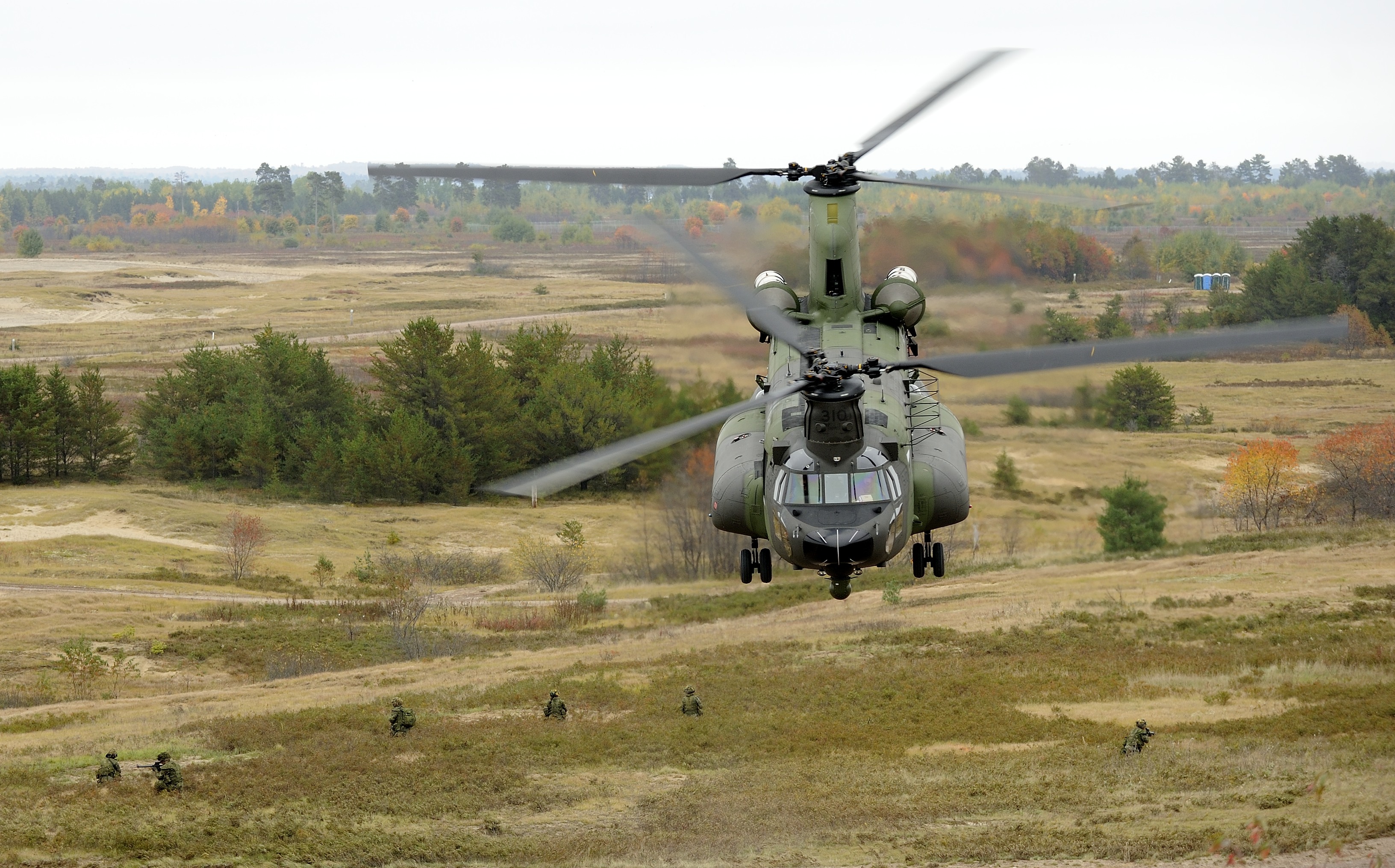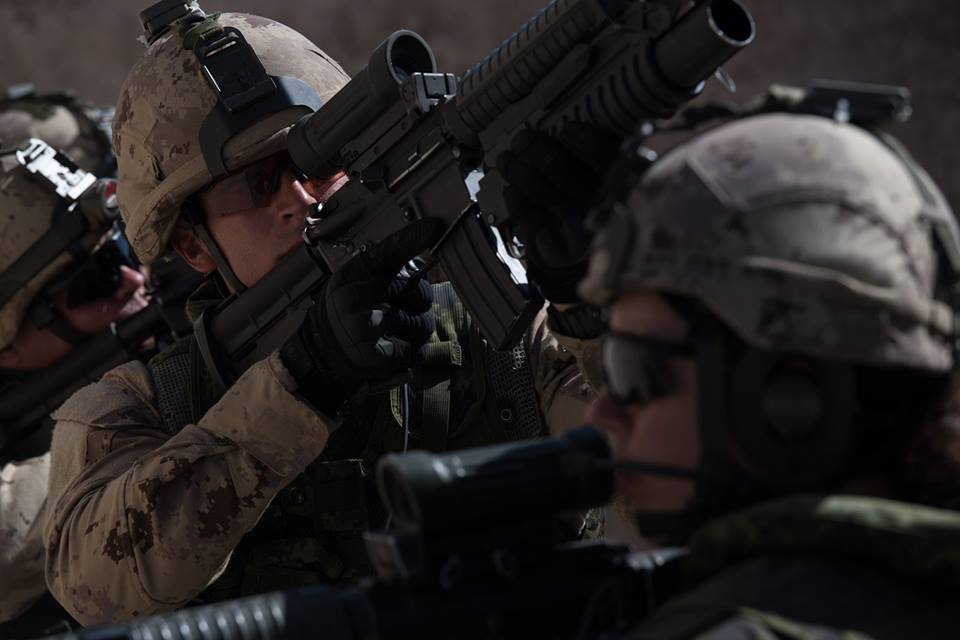On March 8, 2016, members of 408 and 450 Tactical Helicopter Squadrons (THS) began the two-day journey back to Canada after completing three weeks of high-readiness training at the Marine Corps Air Ground Combat Centre at 29 Palms in California.
190 members of the Task Force 1-16 aviation battalion, a composite of 408 CH-146 Griffon and 450 CH-147F Chinook capabilities, trained in aviation battle task standards as part of exercise STRIKING GANDER. Between February 20 and March 8, the aviation battalion conducted door-gunnery qualification; attack operations qualification; warm climate, high-altitude, and mountain flying; mixed-formation training; degraded visual environment landing; and electronic warfare training.
Eight Griffons from 408 in Edmonton and two Chinooks from 450 in Petawawa departed from their home bases on February 18. Lieutenant-Colonel Teller, Commanding Officer of 408 and also responsible for the exercise, was able to answer some questions while at 29 Palms on March 2. He explained that time spent on range during the training exercise was not the only valuable experience for aircrews. “It’s all meaningful experience for my folks […] If I can put my junior aircrews into an aircraft going through some busy air space and train in an unfamiliar environment […] that’s valuable as well.”
STRIKING GANDER is part of the Royal Canadian Air Force’s (RCAF) Managed Readiness Plan (MRP) that was established in 2012. Lessons learned from Canada’s experience in Afghanistan highlighted the need for greater synchronized training and readiness within the RCAF, but also with other Canadian Armed Forces elements. Lieutenant-Colonel Chris McKenna, Commanding Officer of 450, explains that “we need a blend of both Griffons and Chinooks formed as an aviation battalion to pair with the Canadian Army High Readiness Task Force going out the door.” To meet the aim of the MRP, 1 Wing, which oversees tactical aviation squadrons, ensures that there is always an aviation battalion ready to deploy at home or abroad. In other words, an aviation battalion is always on high readiness. The integration of Chinooks and Griffons is ensured through training exercises like STRIKING GANDER.
A high readiness aviation battalion is composed of six to eight Griffons and three to four Chinooks, but its size is entirely scalable to meet operational requirements. Under the RCAF’s MRP, the high readiness aviation battalion headquarters holds the responsibility for deployment liability and this rotates on a yearly basis between 408 and 450 squadrons, as well as 430 THS in Valcartier. As of July 1, 2016, 408 Squadron based in Edmonton will assume the responsibility as the lead mounting unit of the high readiness aviation battalion. 408 will hold the liability for all aviation-related deployments at home and abroad until July 1, 2017.
To meet the level of integration required by the MRP, “each squadron will supply subunits to one of the three headquarters-generating squadrons to train up as the high readiness battalion. Throughout the year, one battalion will be in training while a second is available for deployment.” To this end, 408 will provide a detachment of Griffon capabilities to 450 when it assumes the role of lead mounting unit for high readiness in the summer of 2017.
LCol Teller added that, “while currently training for high readiness, the Chinook is really 9-12 months away from being able to operate in a significant threat environment.” Certain systems, such as those that comprise the Chinook’s advanced aircraft survivability equipment suite, are still undergoing testing and evaluation. Once fully outfitted, many are confident that the Chinook’s systems will have first-rate survivability.
Finally, the managed readiness plan must also ensure integration with other CAF elements. As a joint training opportunity, STRIKING GANDER also featured approximately 100 members of 3 Princess Patricia’s Canadian Light Infantry (3 PPCLI). When joined by 3 PPCLI for a few days, the aviation battalion was able to conduct day and night live-fire company level inserts. “There’s a joint flavor to the exercise as well which is important for tactical aviation which is really owned by the Air Force, but primarily exists to be army aviation,” remarked LCol Teller.
Photo courtesy of Sgt Jean-Francois Lauzé (Garrison Imaging Petawawa).




